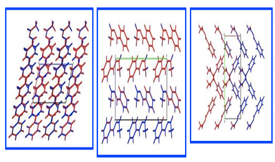
The curious case of acetaldehyde phenylhydrazone: resolution of a 120 year old puzzle where forms with vastly different melting points have the same structure
C.E.S.Bernardes, M.Carravetta, S.J.Coles, E.R.H.V.Eck, H.Meekes, M.E.M.Piedade, M.Pitak, M.Podmore, T.Ruiter, L.Sögütoglu, R.R.E.Steendam, T.L.Threlfall
Cryst. Growth Des. 2019, 19, 907−917.
Abstract
The solid forms of acetaldehyde phenylhydrazone were investigated in detail over a century ago, with curious results: it was reported that a low melting form could be transformed into a high melting form by trace alkali, and the reverse process could be brought about with trace acid. Our re-investigation of this puzzle with modern instrumentation has shown that all samples, although exhibiting sharp melting points varying from 56 °C to 101 °C, have identical IR and solid-state NMR spectra and identical crystal structures. NMR studies of the melts provided the key to the understanding of this strange behaviour: differently melting samples did so because they initially melted to liquids with different proportions of the Z and E isomers, although given enough time they all tended to the same equilibrium proportion. The leading role of the isomerization rate in the melt was confirmed in cyclic DSC experiments and accompanying simulations. In the case of polymorphism, different structures melt to the same liquid. In the present case, the same structure melts to different liquids.
Return Previous Next